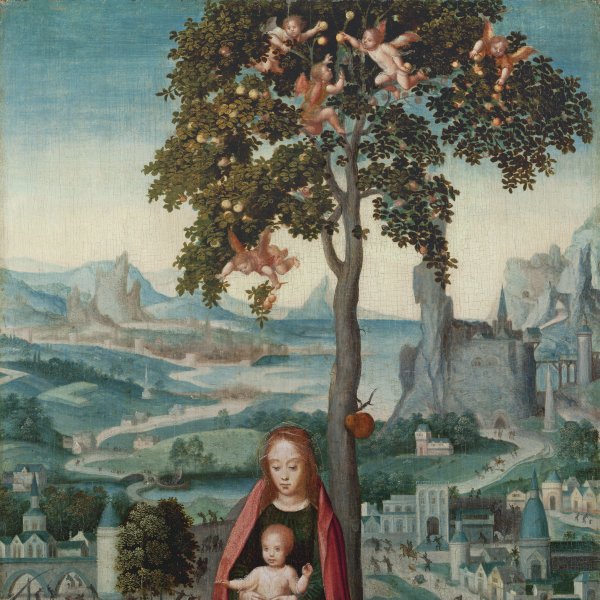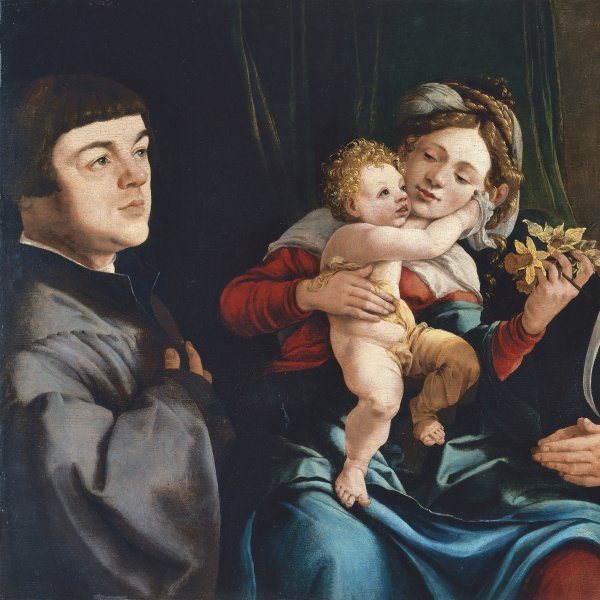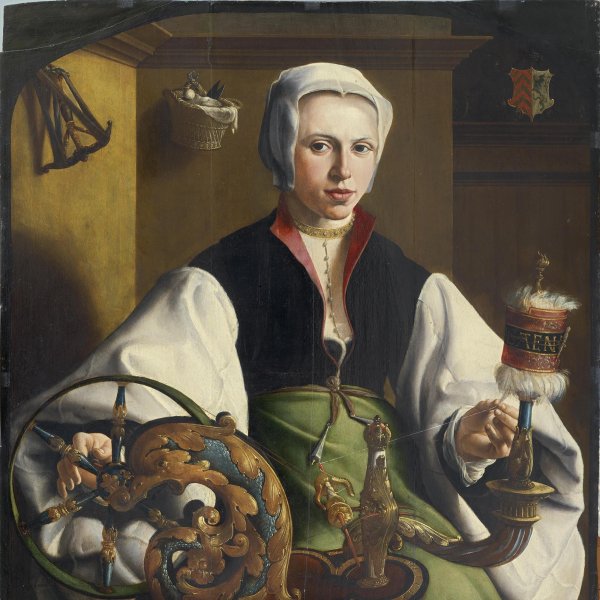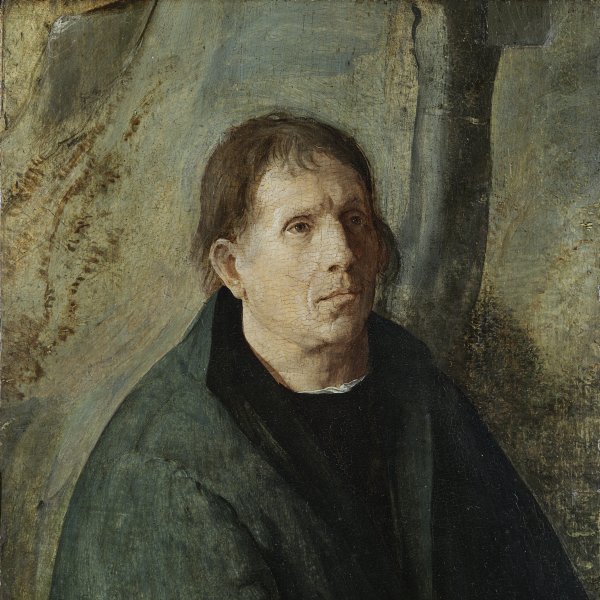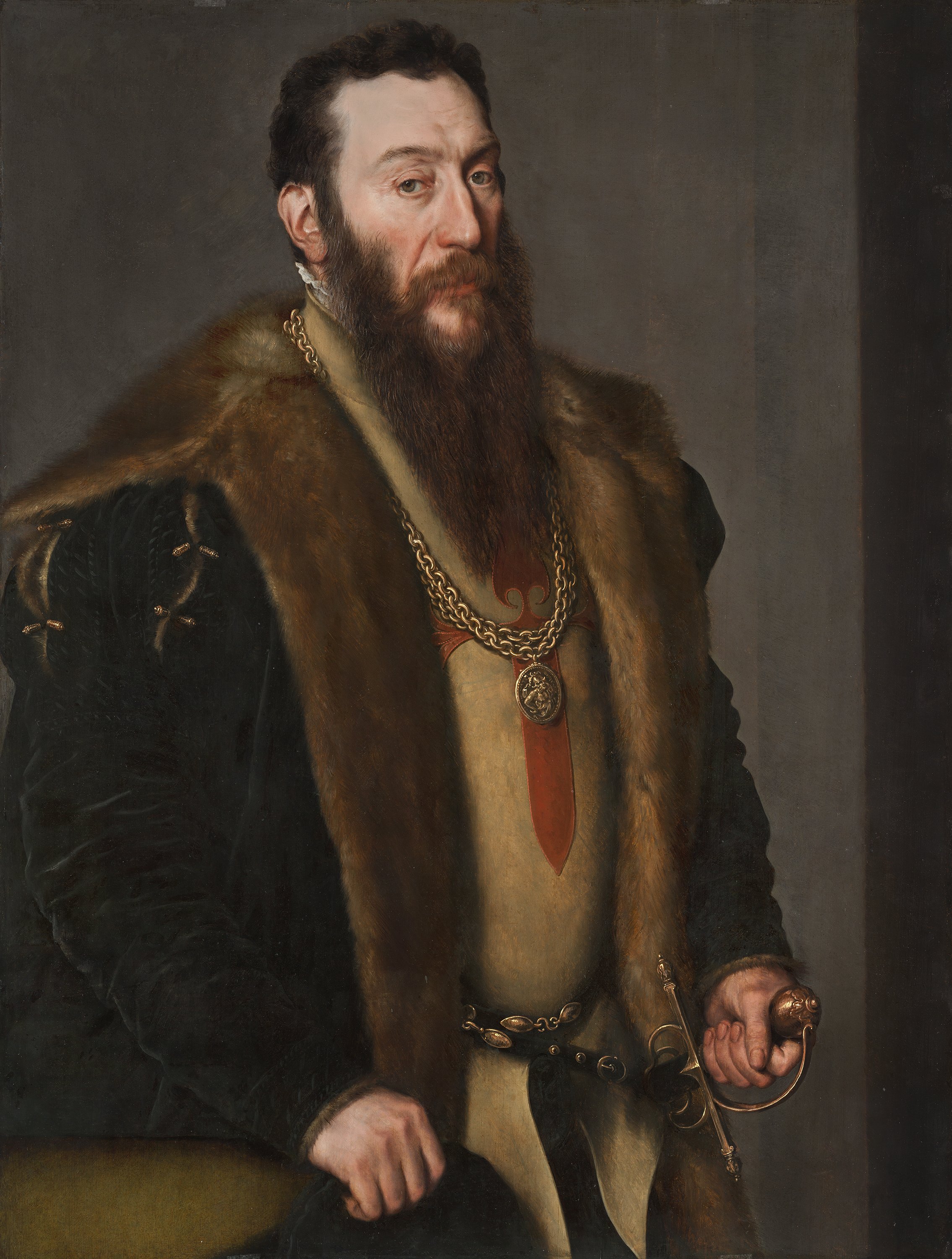Portrait of Giovanni Battista di Castaldo
Antonis Mor was an important 16th-century Flemish painter and a specialist in the so-called “court portrait”. He travelled to England, Portugal and Spain and depicted members of the royal family and their courtiers in a majestic manner but with the austerity characteristic of the reign of Philip II. In his last phase Mor also portrayed scholars and merchants from his own social circle. This portrait follows a model characteristic of his work: the sitter is shown in three-quarter length, leaning with one hand on a table. He turns his head and looks fixedly at the viewer while his face is constructed from a combination of light and shadow that emphasises the features. The sitter has been identified as Giovanni Battista di Castaldo, a Neapolitan soldier who saw active service at the Battle of Pavia, the Battle of Mühlberg and the Sack of Rome.
This portrait of Giovanni Battista di Castaldo is characteristic of Mor in both its typology and format. The sitter is presented threequarter length, standing, with one hand resting on the edge of a table and holding his hat. His head turns towards the viewer so that the light falls on his face, with the rest of his body enveloped in subtle shadow. Castaldo looks at the viewer who, as Elisa Bermejo wrote, “feels himself intensely scrutinised”. With regard to its date, the panel has been compared to another portrait by Mor of Cardinal Granvela of 1549 in the Kunsthistorisches Museum, Vienna. Also from this period is the portrait of Fernando Álvarez de Toledo, Third Duke of Alba (Musées Royaux des Beaux-Arts, Brussels). Woodall suggested two possible dates for this panel: 1549–50, before Castaldo left for Hungary, and 1552–53.
The sitter was identified in earlier publications as a Spanish military figure on the basis of the cross of the Order of Santiago on his breast and the presence of the sword. He was also identified as Jan Baptista Castilan from an inscription that was previously on the panel but which was removed in the 20th century, and as the poet and chronicler Juan de Castellanos, albeit only tentatively. The correct identification was made by Joanna Woodall, who drew attention to the similarities between this sitter’s appearance and two definite portraits of Castaldo: one by Titian that was in the Becker collection in Dortmund, and one on a medal by Annibale Fontana in the National Gallery of Washington.
Castaldo (1500–1562) was of Neapolitan origin. An illustrious military figure, he took part in the battle of Pavia, the Sack of Rome, the battle of Mühlberg and various campaigns against the Turks. He was rewarded with the marquisate of Cassano de Lombardia by Charles V. In 1528 Castaldo was admitted to the military Order of Santiago, whose emblem is included in this image. The Museo Arqueológico in Madrid has a medal by Leone Leoni depicting Castaldo bust-length in profile looking right and wearing armour. The reverse depicts a winged Victory figure with a crown and palm referring to Castaldo’s military achievements. On the medal he is depicted with abundant curly hair and a large beard.
The panel belonged to the dukes of Orléans and was recorded in that collection in 1727 by Dubois de Saint-Gelais in his book Description des tableaux du Palais Royal. Following the sale of the Orléans collection, the panel was in a number of collections, including that of Sir Otto Beit in London in 1913. It was inherited by his heirs until it was auctioned in 1946. Before entering the Thyssen-Bornemisza collection it was with the London dealers Hazlitt, then in a private collection. It was purchased in 1976 by Hans Heinrich Thyssen-Bornemisza for his collection, at that date housed at Villa Favorita, Lugano. Giovanni Battista Castaldo was first shown to the public in an exhibition on Dutch art held at the Royal Academy in London in 1929.
Mar Borobia





